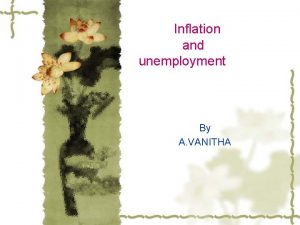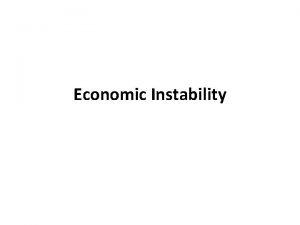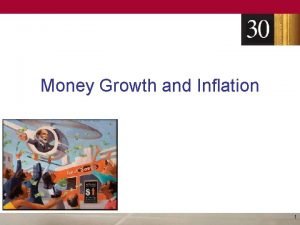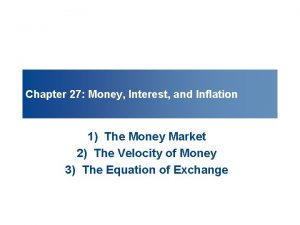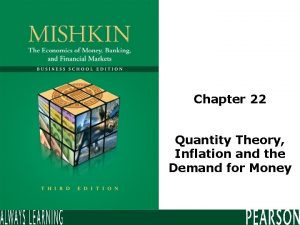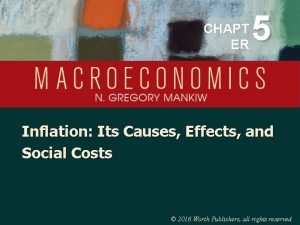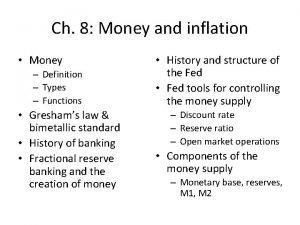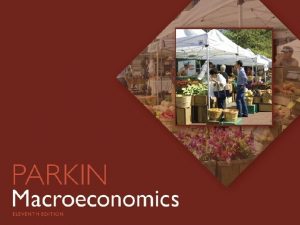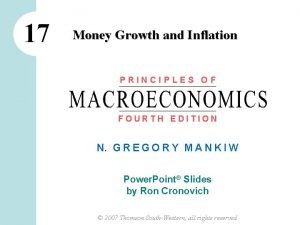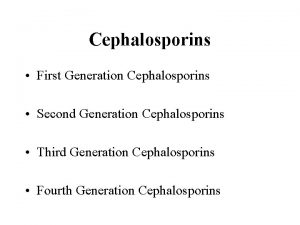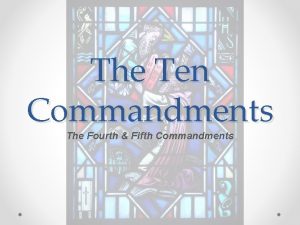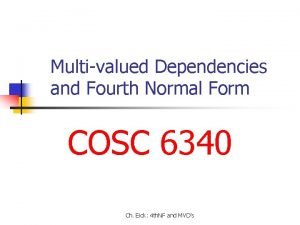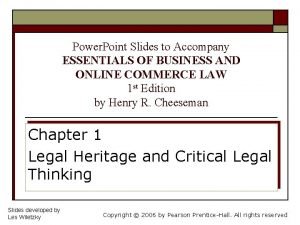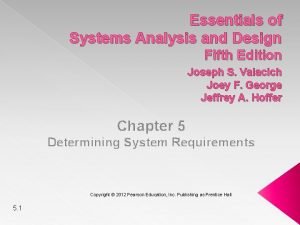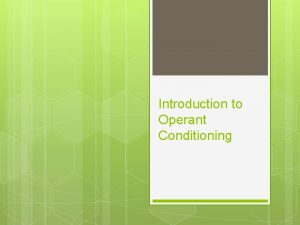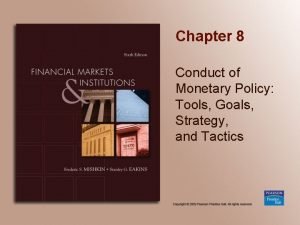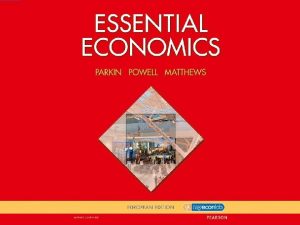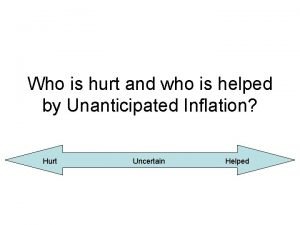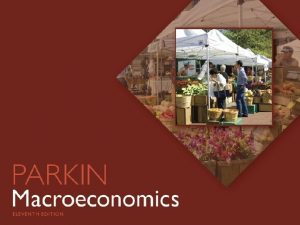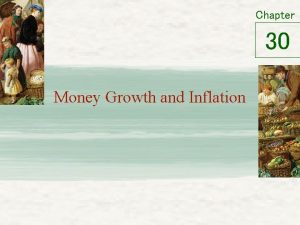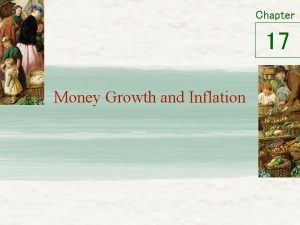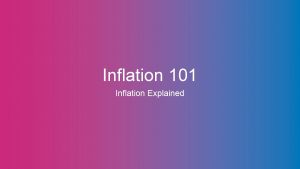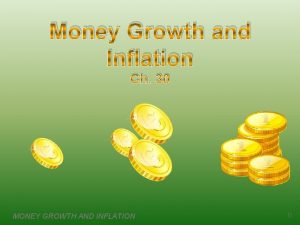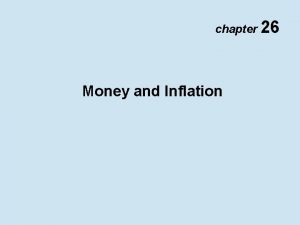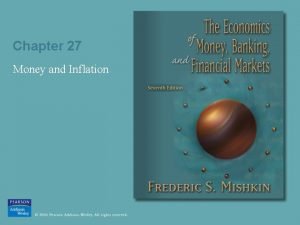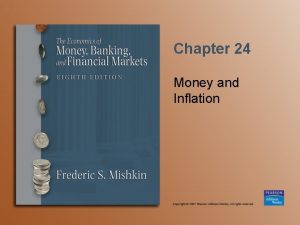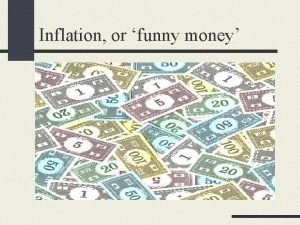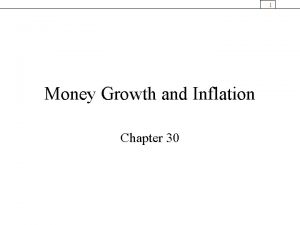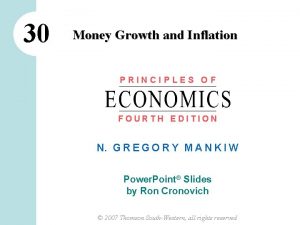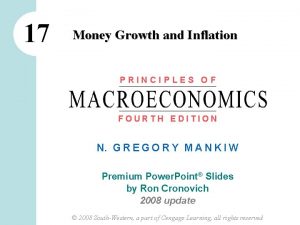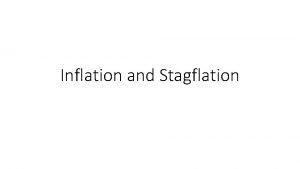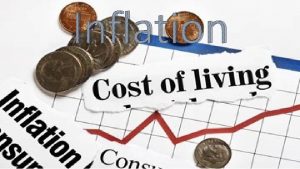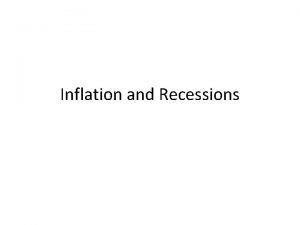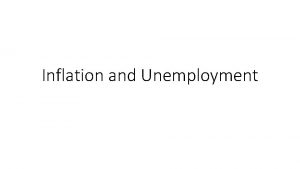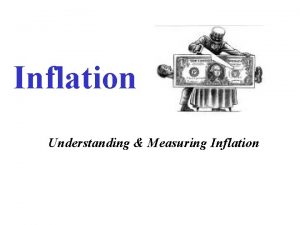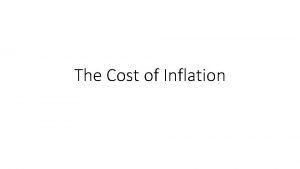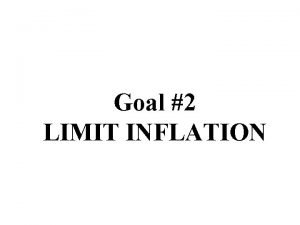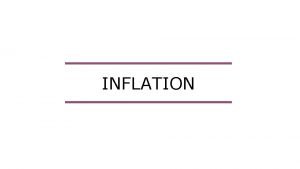22 Money Growth and Inflation ESSENTIALS OF FOURTH


















































- Slides: 50

22 Money Growth and Inflation ESSENTIALS OF FOURTH EDITION N. G R E G O R Y M A N K I W Power. Point® Slides by Ron Cronovich © 2007 Thomson South-Western, all rights reserved

In this chapter, look for the answers to these questions: § How does the money supply affect inflation and nominal interest rates? § Does the money supply affect real variables like real GDP or the real interest rate? § How is inflation like a tax? § What are the costs of inflation? How serious are they? CHAPTER 22 MONEY GROWTH AND INFLATION 1

Introduction § This chapter introduces the quantity theory of money to explain one of the Ten Principles of Economics from Chapter 1: Prices rise when the govt prints too much money. § Most economists believe the quantity theory is a good explanation of the long run behavior of inflation. CHAPTER 22 MONEY GROWTH AND INFLATION 2

The Value of Money § P = the price level (e. g. , the CPI or GDP deflator) P is the price of a basket of goods, measured in money. § 1/P is the value of $1, measured in goods. § Example: basket contains one candy bar. • If P = $2, value of $1 is 1/2 candy bar • If P = $3, value of $1 is 1/3 candy bar § Inflation drives up prices, and drives down the value of money. CHAPTER 22 MONEY GROWTH AND INFLATION 3

The Quantity Theory of Money § Developed by 18 th century philosopher David Hume, and the Classical economists. § Advocated more recently by Nobel Prize Laureate Milton Friedman. § Asserts that the quantity of money determines the value of money. § We study this theory using two approaches: 1. a supply-demand diagram 2. an equation CHAPTER 22 MONEY GROWTH AND INFLATION 4

Money Supply (MS) § In real world, determined by Federal Reserve, the banking system, consumers. § In this model, we assume the Fed precisely controls MS and sets it at some fixed amount. CHAPTER 22 MONEY GROWTH AND INFLATION 5

Money Demand (MD) § Refers to how much wealth people want to hold in liquid form. § Depends on P: An increase in P reduces the value of money, so more money is required to buy g&s. § Thus, quantity of money demanded is negatively related to the value of money and positively related to P, other things equal. (These “other things” include real income, interest rates, availability of ATMs. ) CHAPTER 22 MONEY GROWTH AND INFLATION 6

The Money Supply-Money Demand Diagram Value of Money, 1/P 1 As the value of money rises, the price level falls. Price Level, P 1 ¾ 1. 33 ½ 2 ¼ 4 Quantity of Money CHAPTER 22 MONEY GROWTH AND INFLATION 7

The Money Supply-Demand Diagram Value of Money, 1/P Price Level, P MS 1 1 1 ¾ 1. 33 ½ ¼ The Fed sets MS at some fixed value, regardless of P. $1000 CHAPTER 22 2 4 Quantity of Money MONEY GROWTH AND INFLATION 8

The Money Supply-Demand Diagram Value of Money, 1/P 1 A fall in value of money (or increase in P) increases the quantity of money demanded: Price Level, P 1 ¾ 1. 33 ½ 2 ¼ 4 MD 1 Quantity of Money CHAPTER 22 MONEY GROWTH AND INFLATION 9

The Money Supply-Demand Diagram Value of Money, 1/P MS 1 1 eq’m value of money P adjusts to equate quantity of money demanded with money supply. A 2 ¼ MD 1 $1000 CHAPTER 22 1 1. 33 ¾ ½ Price Level, P eq’m price level 4 Quantity of Money MONEY GROWTH AND INFLATION 10

The Effects of a Monetary Injection Value of Money, 1/P MS 1 MS 2 1 Fed Suppose the increases the money supply. ¾ eq’m value of money ½ 1 Then the value of money falls, and P rises. 1. 33 A 2 B ¼ MD 1 $1000 CHAPTER 22 Price Level, P 4 eq’m price level $2000 Quantity of Money MONEY GROWTH AND INFLATION 11

A Brief Look at the Adjustment Process Result from graph: Increasing MS causes P to rise. How does this work? Short version: • At the initial P, an increase in MS causes • • excess supply of money. People get rid of their excess money by spending it on g&s or by loaning it to others, who spend it. Result: increased demand for goods. But supply of goods does not increase, so prices must rise. (Other things happen in the short run, which we will study in later chapters. ) CHAPTER 22 MONEY GROWTH AND INFLATION 12

Real vs. Nominal Variables § Nominal variables are measured in monetary units. examples: nominal GDP, nominal interest rate (rate of return measured in $) nominal wage ($ per hour worked) § Real variables are measured in physical units. examples: real GDP, real interest rate (measured in output) real wage (measured in output) CHAPTER 22 MONEY GROWTH AND INFLATION 13

Real vs. Nominal Variables Prices are normally measured in terms of money. • Price of a compact disc: $15/cd • Price of a pepperoni pizza: $10/pizza A relative price is the price of one good relative to (divided by) another: • Relative price of CDs in terms of pizza: $15/cd price of cd = 1. 5 pizzas per cd = $10/pizza price of pizza Relative prices are measured in physical units, so they are real variables. CHAPTER 22 MONEY GROWTH AND INFLATION 14

Real vs. Nominal Wage An important relative price is the real wage: W = nominal wage = price of labor, e. g. , $15/hour P = price level = price of g&s, e. g. , $5/unit of output Real wage is the price of labor relative to the price of output: $15/hour W = 3 units output per hour = $5/unit of output P CHAPTER 22 MONEY GROWTH AND INFLATION 15

The Classical Dichotomy § Classical dichotomy: theoretical separation of nominal and real variables § Hume and the classical economists suggested that monetary developments affect nominal variables, but not real variables. § If central bank doubles the money supply, Hume & classical thinkers contend • all nominal variables – including prices – will double. • all real variables – including relative prices – will remain unchanged. CHAPTER 22 MONEY GROWTH AND INFLATION 16

The Neutrality of Money § Monetary neutrality: the proposition that changes in the money supply do not affect real variables § Doubling money supply causes all nominal prices to double; what happens to relative prices? § Initially, relative price of cd in terms of pizza is $15/cd = 1. 5 pizzas per cd = $10/pizza The relative price After nominal prices double, is unchanged. $30/cd price of cd = 1. 5 pizzas per cd = $20/pizza price of cd price of pizza § CHAPTER 22 MONEY GROWTH AND INFLATION 17

The Neutrality of Money § Monetary neutrality: the proposition that changes in the money supply do not affect real variables. § Similarly, the real wage W/P remains unchanged, so • • • quantity of labor supplied does not change quantity of labor demanded does not change total employment of labor does not change § The same applies to employment of capital and other resources. § Since employment of all resources is unchanged, total output is also unchanged by the money supply. CHAPTER 22 MONEY GROWTH AND INFLATION 18

The Neutrality of Money § Most economists believe the classical dichotomy and neutrality of money describe the economy in the long run. § In later chapters, we will see that monetary changes can have important short-run effects on real variables. CHAPTER 22 MONEY GROWTH AND INFLATION 19

The Velocity of Money § Velocity of money: the rate at which money changes hands § Notation: Px. Y = nominal GDP = (price level) x (real GDP) M = money supply V = velocity § Velocity formula: CHAPTER 22 Px. Y V = M MONEY GROWTH AND INFLATION 20

The Velocity of Money Px. Y Velocity formula: V = M Example with one good: pizza. In 2006, Y = real GDP = 3000 pizzas P = price level = price of pizza = $10 Px. Y $30, 000 = nominal GDP = value of pizzas = M = money supply = $10, 000 V = velocity = $30, 000/$10, 000 = 3 The average dollar was used in 3 transactions. CHAPTER 22 MONEY GROWTH AND INFLATION 21

U. S. Nominal GDP, M 2, and Velocity (1960=100) 1960 -2005 Velocity is fairly stable over time. Nominal GDP M 2 Velocity CHAPTER 22 MONEY GROWTH AND INFLATION

The Quantity Equation Px. Y Velocity formula: V = M § Multiply both sides of formula by M: Mx. V = Px. Y § Called the quantity equation CHAPTER 22 MONEY GROWTH AND INFLATION 23

The Quantity Theory in 5 Steps Start with quantity equation: M x V = P x Y 1. V is stable. 2. So, a change in M causes nominal GDP (P x Y) to change by the same percentage. 3. A change in M does not affect Y: money is neutral, Y is determined by technology & resources 4. So, P changes by same percentage as P x Y and M. 5. Rapid money supply growth causes rapid inflation. CHAPTER 22 MONEY GROWTH AND INFLATION 24

ACTIVE LEARNING Exercise 1: One good: corn. The economy has enough labor, capital, and land to produce Y = 800 bushels of corn. V is constant. In 2005, MS = $2000, P = $5/bushel. a. Compute nominal GDP and velocity in 2005. For 2006, the Fed increases MS by 5%, to $2100. b. Compute the 2006 values of nominal GDP and P. Compute the inflation rate for 2005 -2006. c. Suppose tech. progress causes Y to increase to 824 in 2006. Compute 2005 -2006 inflation rate. CHAPTER 22 MONEY GROWTH AND INFLATION 25

ACTIVE LEARNING Answers 1: Given: Y = 800, V is constant, MS = $2000 and P = $5 in 2005. a. Compute nominal GDP and velocity in 2005. Nominal GDP = P x Y = $5 x 800 = $4000 Px. Y = 2 = V = $2000 M CHAPTER 22 MONEY GROWTH AND INFLATION 26

ACTIVE LEARNING Answers 1: Given: Y = 800, V is constant, MS = $2000 and P = $5 in 2005. For 2006, the Fed increases MS by 5%, to $2100. b. Compute the 2006 values of nominal GDP and P. Compute the inflation rate for 2005 -2006. Nominal GDP = P x Y = M x V (Quantity Eq’n) = $2100 x 2 = $4200 Px. Y P = = $5. 25 = 800 Y $5. 25 – 5. 00 Inflation rate = = 5% (same as MS!) 5. 00 27 CHAPTER 22 MONEY GROWTH AND INFLATION

ACTIVE LEARNING Answers 1: Given: Y = 800, V is constant, MS = $2000 and P = $5 in 2005. For 2006, the Fed increases MS by 5%, to $2100. c. Suppose tech. progress causes Y to increase 3% in 2006, to 824. Compute 2005 -2006 inflation rate. First, use Quantity Eq’n to compute P: $4200 Mx. V P = = $5. 10 = 824 Y $5. 10 – 5. 00 Inflation rate = = 2% 5. 00 CHAPTER 22 MONEY GROWTH AND INFLATION 28

Hyperinflation § Hyperinflation is generally defined as inflation exceeding 50% per month. § Recall one of the Ten Principles from Chapter 1: Prices rise when the government prints too much money. § Excessive growth in the money supply always causes hyperinflation. CHAPTER 22 MONEY GROWTH AND INFLATION 29

The Inflation Tax § When tax revenue is inadequate and ability to borrow is limited, govt may print money to pay for its spending. § Almost all hyperinflations start this way. § The revenue from printing money is the inflation tax: printing money causes inflation, which is like a tax on everyone who holds money. § In the U. S. , the inflation tax today accounts for less than 3% of total revenue. CHAPTER 22 MONEY GROWTH AND INFLATION 30

The Fisher Effect § Rearrange the definition of the real interest rate: nominal real interest inflation + = interest rate § The real interest rate is determined by saving & investment in the loanable funds market. § Money supply growth determines inflation rate. § So, this equation shows how the nominal interest rate is determined. CHAPTER 22 MONEY GROWTH AND INFLATION 31

The Fisher Effect nominal real interest inflation + = interest rate § In the long run, money is neutral, so a change in the money growth rate affects the inflation rate but not the real interest rate. § So, the nominal interest rate adjusts one-for-one with changes in the inflation rate. § This relationship is called the Fisher effect after Irving Fisher, who studied it. CHAPTER 22 MONEY GROWTH AND INFLATION 32

U. S. Nominal Interest & Inflation Rates The close relation between these variables is evidence for the Fisher effect. CHAPTER 22 MONEY GROWTH AND INFLATION

The Fisher Effect & the Inflation Tax nominal real interest inflation + = interest rate § The inflation tax applies to people’s holdings of money, not their holdings of wealth. § The Fisher effect: an increase in inflation causes an equal increase in the nominal interest rate, so the real interest rate (on wealth) is unchanged. CHAPTER 22 MONEY GROWTH AND INFLATION 34

The Costs of Inflation § The inflation fallacy: most people think inflation erodes real incomes. § But inflation is a general increase in prices, of the things people buy and the things they sell (e. g. their labor). § In the long run, real incomes are determined by real variables, not the inflation rate. CHAPTER 22 MONEY GROWTH AND INFLATION 35

U. S. Average Hourly Earnings & the CPI (right scale) Nominal wage (left scale) CHAPTER 22 Inflation causes the CPI and nominal wages to rise together over the long run. MONEY GROWTH AND INFLATION

The Costs of Inflation § Shoeleather costs: the resources wasted when inflation encourages people to reduce their money holdings • includes the time and transactions costs of more frequent bank withdrawals § Menu costs: the costs of changing prices • printing new menus, mailing new catalogs, etc. CHAPTER 22 MONEY GROWTH AND INFLATION 37

The Costs of Inflation § Misallocation of resources from relative-price variability: Firms don’t all raise prices at the same time, so relative prices can vary… which distorts the allocation of resources. § Confusion & inconvenience: Inflation changes the yardstick we use to measure transactions. Complicates long-range planning and the comparison of dollar amounts over time. CHAPTER 22 MONEY GROWTH AND INFLATION 38

The Costs of Inflation § Tax distortions: Inflation makes nominal income grow faster than real income. Taxes are based on nominal income, and some are not adjusted for inflation. So, inflation causes people to pay more taxes even when their real incomes don’t increase. CHAPTER 22 MONEY GROWTH AND INFLATION 39

ACTIVE LEARNING Tax distortions 2: You deposit $1000 in the bank for one year. CASE 1: inflation = 0%, nom. interest rate = 10% CASE 2: inflation = 10%, nom. interest rate = 20% a. In which case does the real value of your deposit grow the most? Assume the tax rate is 25%. b. In which case do you pay the most taxes? c. Compute the after-tax nominal interest rate, then subtract off inflation to get the after-tax real interest rate for both cases. CHAPTER 22 MONEY GROWTH AND INFLATION 40

ACTIVE LEARNING Answers 2: Deposit = $1000. CASE 1: inflation = 0%, nom. interest rate = 10% CASE 2: inflation = 10%, nom. interest rate = 20% a. In which case does the real value of your deposit grow the most? In both cases, the real interest rate is 10%, so the real value of the deposit grows 10% (before taxes). CHAPTER 22 MONEY GROWTH AND INFLATION 41

ACTIVE LEARNING Answers 2: Deposit = $1000. Tax rate = 25%. CASE 1: inflation = 0%, nom. interest rate = 10% CASE 2: inflation = 10%, nom. interest rate = 20% b. In which case do you pay the most taxes? CASE 1: interest income = $100, so you pay $25 in taxes. CASE 2: interest income = $200, so you pay $50 in taxes. CHAPTER 22 MONEY GROWTH AND INFLATION 42

ACTIVE LEARNING Answers 2: Deposit = $1000. Tax rate = 25%. CASE 1: inflation = 0%, nom. interest rate = 10% CASE 2: inflation = 10%, nom. interest rate = 20% c. Compute the after-tax nominal interest rate, then subtract off inflation to get the after-tax real interest rate for both cases. CASE 1: nominal = 0. 75 x 10% = 7. 5% real CASE 2: nominal = 0. 75 x 20% = 15% real CHAPTER 22 = 7. 5% – 0% = 7. 5% = 15% – 10% = 5% MONEY GROWTH AND INFLATION 43

ACTIVE LEARNING Summary & lessons 2: Deposit = $1000. Tax rate = 25%. CASE 1: inflation = 0%, nom. interest rate = 10% CASE 2: inflation = 10%, nom. interest rate = 20% Inflation… § raises nominal interest rates (Fisher effect) but not real interest rates § increases savers’ tax burdens § lowers the after-tax real interest rate CHAPTER 22 MONEY GROWTH AND INFLATION 44

A Special Cost of Unexpected Inflation § Arbitrary redistributions of wealth Higher-than-expected inflation transfers purchasing power from creditors to debtors: Debtors get to repay their debt with dollars that aren’t worth as much. Lower-than-expected inflation transfers purchasing power from debtors to creditors. High inflation is more variable and less predictable than low inflation. So, these arbitrary redistributions are frequent when inflation is high. CHAPTER 22 MONEY GROWTH AND INFLATION 45

The Costs of Inflation § All these costs are quite high for economies experiencing hyperinflation. § For economies with low inflation (< 10% per year), these costs are probably much smaller, though their exact size is open to debate. CHAPTER 22 MONEY GROWTH AND INFLATION 46

CONCLUSION § This chapter explains one of the Ten Principles of economics: Prices rise when the govt prints too much money. § We saw that money is neutral in the long run, affecting only nominal variables. § In later chapters, we will see that money has important effects in the short run on real variables like output and employment. CHAPTER 22 MONEY GROWTH AND INFLATION 47

CHAPTER SUMMARY § To explain inflation in the long run, economists use the quantity theory of money. According to this theory, the price level depends on the quantity of money, and the inflation rate depends on the money growth rate. § The classical dichotomy is the division of variables into real & nominal. The neutrality of money is the idea that changes in the money supply affect nominal variables, but not real ones. Most economists believe these ideas describe the economy in the long run. CHAPTER 22 MONEY GROWTH AND INFLATION 48

CHAPTER SUMMARY § The inflation tax is the loss in the real value of people’s money when the government causes inflation by printing money. § The Fisher effect is the one-for-one relation between changes in the inflation rate and changes in the nominal interest rate. § The costs of inflation include menu costs, shoeleather costs, confusion and inconvenience, distortions in relative prices and the allocation of resources, tax distortions, and arbitrary redistributions of wealth. CHAPTER 22 MONEY GROWTH AND INFLATION 49
 Economics velocity formula
Economics velocity formula Money money money team
Money money money team Futanari cum inflation
Futanari cum inflation Chapter 13 economic instability
Chapter 13 economic instability The fisher equation
The fisher equation Money market inflation
Money market inflation Quantity theory of money inflation
Quantity theory of money inflation Quantity theory of money inflation
Quantity theory of money inflation 8 money types
8 money types Quantity theory of money inflation
Quantity theory of money inflation Relative growth rates
Relative growth rates Root hair structure
Root hair structure Primary growth and secondary growth in plants
Primary growth and secondary growth in plants Primary growth and secondary growth in plants
Primary growth and secondary growth in plants West egg great gatsby setting
West egg great gatsby setting Money smart money match
Money smart money match Money on money multiple
Money on money multiple Great gatsby historical context
Great gatsby historical context Context of the great gatsby
Context of the great gatsby Nominal variable examples
Nominal variable examples Step growth polymerization vs chain growth
Step growth polymerization vs chain growth Geometric growth graph
Geometric growth graph Neoclassical growth theory vs. endogenous growth theory
Neoclassical growth theory vs. endogenous growth theory Organic growth vs inorganic growth
Organic growth vs inorganic growth 2 generation cephalosporins
2 generation cephalosporins Pharmoco
Pharmoco Fourth party logistics advantages and disadvantages
Fourth party logistics advantages and disadvantages First generation of computer
First generation of computer Fourth and fifth commandment
Fourth and fifth commandment Multi valued dependency
Multi valued dependency Pharyngeal arch vs pouch
Pharyngeal arch vs pouch Expert systems: principles and programming, fourth edition
Expert systems: principles and programming, fourth edition Safeguarding and child protection the essentials
Safeguarding and child protection the essentials It essentials virtual desktop simulator online
It essentials virtual desktop simulator online Essentials of business and online commerce law
Essentials of business and online commerce law Structure of a drama
Structure of a drama Essentials of nursing leadership & management
Essentials of nursing leadership & management Web essentials clients servers and communication
Web essentials clients servers and communication Essentials of systems analysis and design
Essentials of systems analysis and design Strength antrenmanı
Strength antrenmanı It essentials pc hardware and software
It essentials pc hardware and software Graphic design essentials
Graphic design essentials Operant conditioning definition
Operant conditioning definition It essentials pc hardware and software
It essentials pc hardware and software Shifters of srpc
Shifters of srpc Inflation pros and cons
Inflation pros and cons Monitoring jobs and inflation
Monitoring jobs and inflation Who is hurt and who is helped by unanticipated inflation
Who is hurt and who is helped by unanticipated inflation Relationship between inflation and unemployment
Relationship between inflation and unemployment What creates inflation
What creates inflation Monitoring jobs and inflation
Monitoring jobs and inflation


